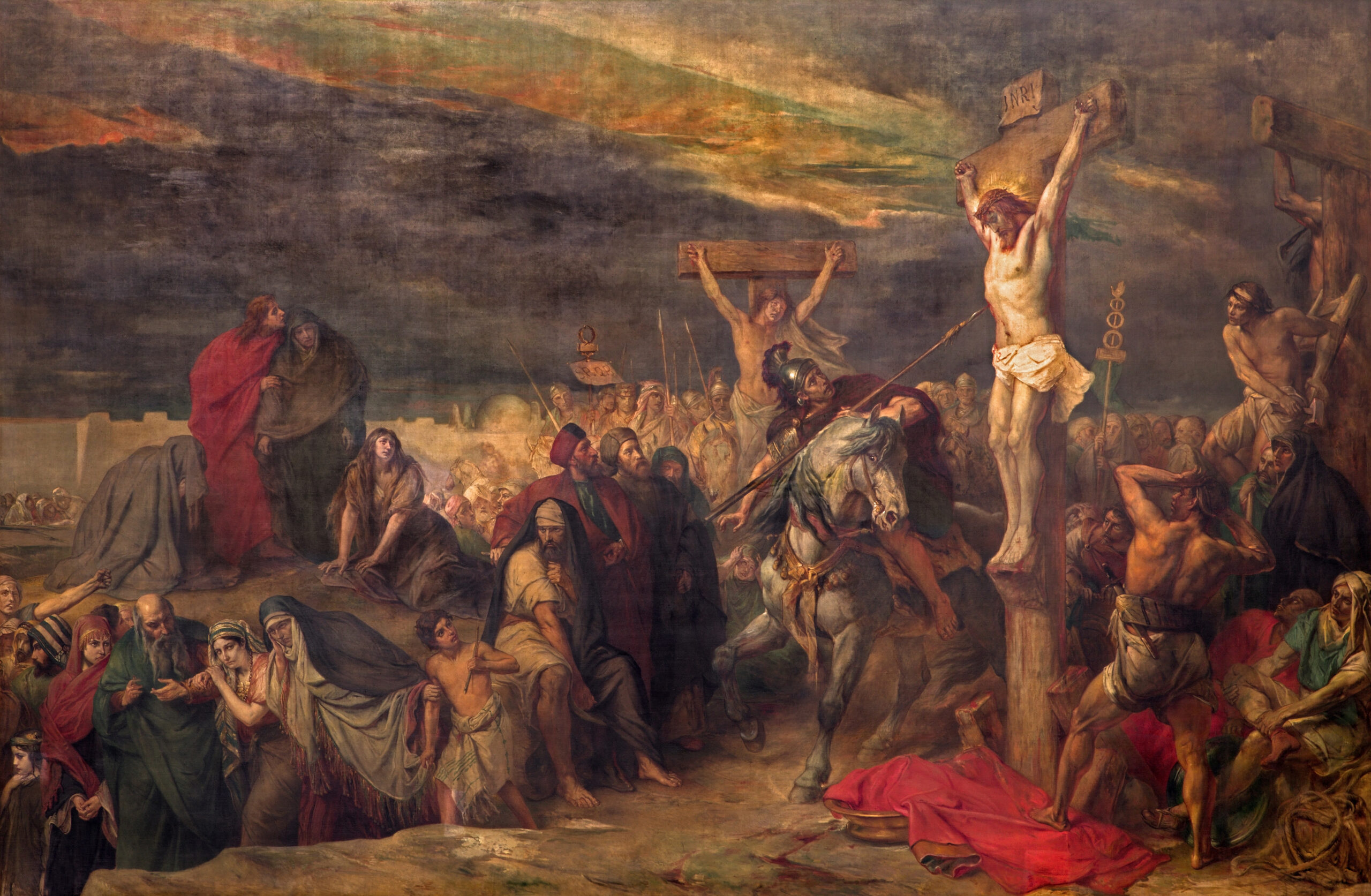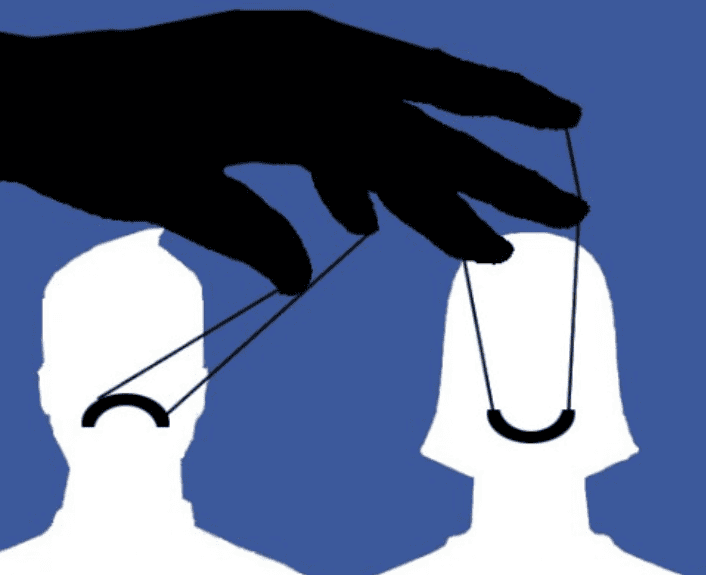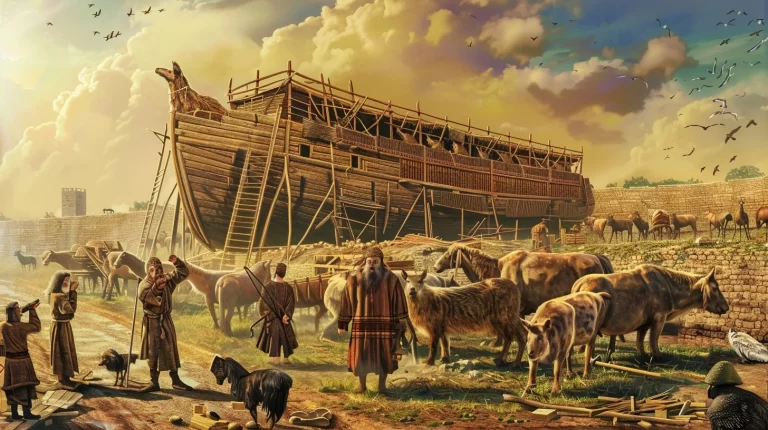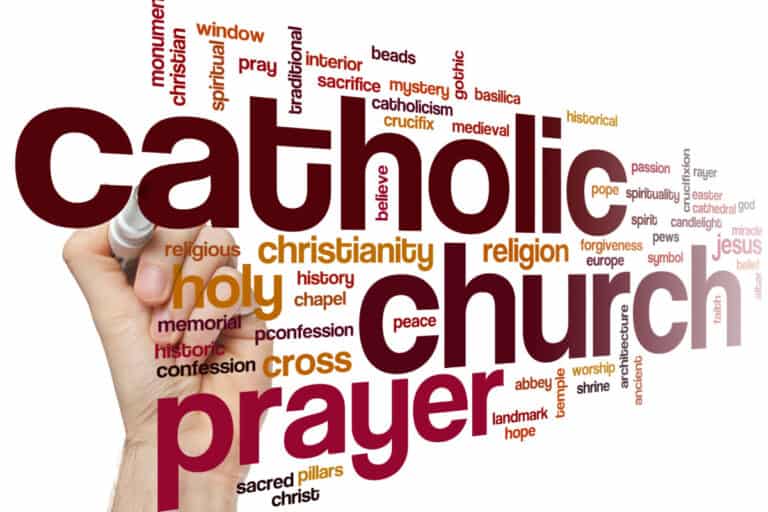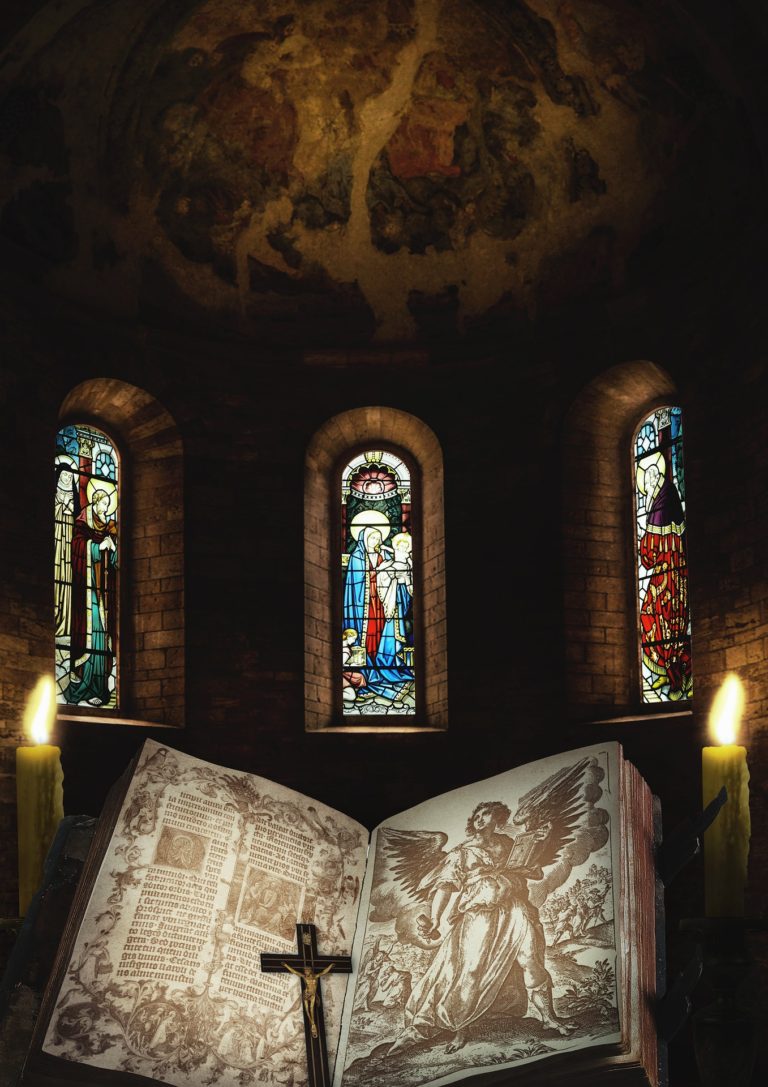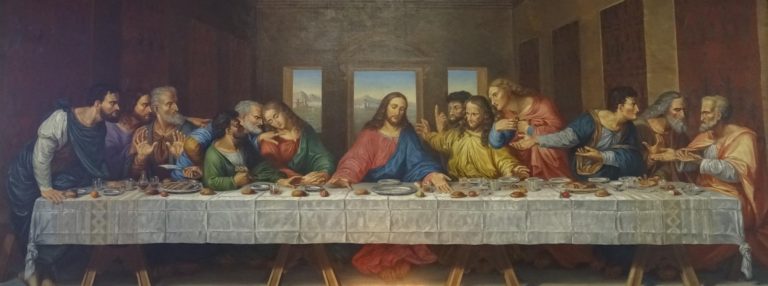Is their Historical Evidence of the Date of Jesus’ Death and Resurrection?
The historical evidence points to a specific date for Our Lord’s crucifixion – Friday, April 3, 33 AD. This date is not merely an approximation but is supported by astronomical calculations and the timing of Passover in ancient Jerusalem. The evidence for Jesus’ resurrection begins with this precisely dated event, making it one of the most thoroughly documented occurrences in ancient history.
In this article, we shall examine the evidence that lends support to a 33 AD, exploring how various pieces of evidence work together to validate this crucial date in Christian history.
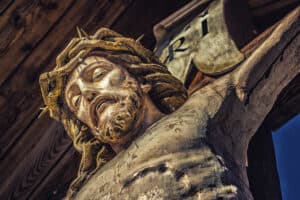
How does Astronomical Evidence lend support to a 33 AD Crucifixion date?
How can we determine with such precision when Our Lord’s crucifixion occurred?
The answer lies primarily in the heavens themselves. Multiple scientific studies have converged on a specific date that aligns remarkably well with biblical accounts, historical records, and celestial phenomena.
A) Lunar eclipse of April 3, 33 AD and its visibility in Jerusalem
The most compelling astronomical evidence for dating Jesus’ crucifixion comes from a lunar eclipse that occurred on April 3, 33 AD. This eclipse has been precisely calculated using NASA’s astronomical models, which track the positions of Earth, moon, and sun throughout history [2]. The Gospel accounts mention darkness falling over the land during the crucifixion, plus there are biblical references to the moon turning “to blood” – language historically associated with lunar eclipses [13].
What does the blood moon signify in Scripture?
Throughout the Bible, celestial signs often accompany momentous divine interventions. In the 1980s, British scientists Colin Humphreys and W.G. Waddington conducted groundbreaking research using high-precision astronomical calculations to reconstruct the first century Jewish calendar [13]. Their findings, published in the prestigious journal Nature, demonstrated that a partial lunar eclipse occurred on Friday, April 3, 33 AD [3]. This eclipse would have been visible from Jerusalem shortly after sunset [2].
The timing is especially significant. According to the calculations, the moon rose above Jerusalem at approximately 6:20 pm with about 20% of its disk in the umbra (the darkest part of Earth’s shadow) and the remainder in the penumbra [5]. The perceived eclipse ended around 7:10 pm [5]. However, the effect would have been dramatic because the eclipsed portion was the edge of the moon that first appeared on the horizon [3]. Consequently, the rising moon would have loomed with a distinctive reddish cast, creating a striking visual phenomenon [14].
This blood-red appearance corresponds perfectly with Peter’s quotation of Joel’s prophecy in Acts 2:20:
“The sun shall be turned to darkness and the moon to blood before that great and notable day of the Lord come” [15].
In fact, high-precision calculations show that the rising moon would still have been partially within Earth’s shadow, making the eclipse visible to observers in Jerusalem [3].
This astronomical alignment is particularly compelling as it shows how God arranged even the heavens to testify to the sacrifice of His Son. The blood-red moon rising on the very evening of Christ’s death serves as a cosmic acknowledgment of the world-changing event that had just occurred.
How the Passover calendar aligns with a Friday crucifixion?
Authenticating the date of Jesus’ crucifixion requires aligning several calendar requirements. First, according to Gospel accounts, Jesus died on a Friday that was also the Day of Preparation for Passover [15]. For first-century Jews, days ran from evening to evening, with Passover lambs being slaughtered between 3-5 pm on the 14th day of the Jewish month Nisan [3]. The Passover meal itself began with moonrise that evening, marking the beginning of Nisan 15 [3].
To identify potential crucifixion dates, scholars needed to find Fridays that coincided with Passover preparation during Pontius Pilate’s rule over Judea (26-36 AD) [3]. Humphreys and Waddington’s refined astronomical calculations of the first-century Jewish calendar revealed only two possible dates that satisfied these conditions:
April 7, 30 AD
April 3, 33 AD [15]
Between these two candidates, several factors favor the 33 AD date. Primarily, it’s the only one accompanied by a lunar eclipse visible from Jerusalem at Passover time between 26-36 AD [5]. Additionally, this date aligns perfectly with John’s Gospel chronology, which indicates Jesus died at the same time the Passover lambs were being slaughtered in the Temple [15].
Even more convincingly, all four Gospels record that Jesus died at approximately the “ninth hour” by Jewish reckoning, which corresponds to around 3:00 pm [16]. This timing creates a powerful symbolic connection—as the Passover lambs were being ritually sacrificed in the Temple, Jesus himself became what Paul later called “our Passover lamb” (1 Corinthians 5:7).
The astronomical evidence, combined with historical records and biblical accounts, builds a compelling case that Jesus died on Friday, April 3, 33 AD. This precise dating establishes a firm chronological foundation for examining the historical evidence of Jesus’ resurrection, which according to Christian tradition, occurred on the Sunday following this date.
How Cross-Referencing Archeology and Texts Prove the Resurrection?
Establishing the historical timeline of Jesus’ crucifixion requires rigorous cross-referencing between ancient texts and archeological discoveries. The Catholic approach to this historical investigation values both Scripture and external evidence, recognizing that truth is unified whether discovered through faith or reason.
A) Use of Josephus and Tacitus in dating Jesus’ death
First-century Jewish historian Flavius Josephus (37-100 AD) provides crucial external confirmation of Jesus’ existence and crucifixion in two separate passages. In his Antiquities of the Jews, written around 93-94 AD, Josephus references Jesus. Although scholars recognize Christian interpolations in the longer passage (known as the Testimonium Flavianum), the scholarly consensus acknowledges an authentic core that confirms Jesus’ existence, His execution by Pontius Pilate, and the continuation of His movement [23].
This is consistent with what we find in the early Church Fathers, who also recognized the historical validity of Jesus’ life and death as testified by non-Christian sources. The Catholic Church has always maintained that our faith, while supernatural in origin, is grounded in historical reality.
Simultaneously, Roman historian Tacitus offers independent corroboration in his Annals (c. 116 AD), where he mentions “Christus” suffering “the extreme penalty during the reign of Tiberius at the hands of one of our procurators, Pontius Pilate” [24].
Remarkably, historians consider this reference particularly valuable for three main reasons:
It originates from a non-Christian source with no incentive to validate Christian claims
The negative tone toward Christians makes Christian forgery extremely unlikely
It independently confirms the basic historical framework of the Gospel accounts [24]
As Robert Van Voorst notes, Tacitus provides “the most precise information about Christ” among Roman writers [24]. From just these two non-Christian sources plus the Pauline epistles, scholars can establish Jesus’ existence, approximate time, location, and method of death [22].
Should you be looking for direct Roman acknowledgment of Jesus in contemporary government records, you will be searching in vain. This is to be expected given the empire’s size and the initially localized nature of Christianity. What we do have, however, are these invaluable later historical references that confirm the Gospel accounts.
B) Integration of Gospel narratives with archeological strata
The Doctrine of the Incarnation teaches that God truly entered human history in a specific time and place. This theological truth is supported by archeological findings that verify the historical context of the Gospels.
In conjunction with textual evidence, archeologists employ careful stratigraphic analysis to verify historical figures mentioned in biblical accounts. The discovery of the Pilate Stone in 1961 conclusively demonstrated the historicity of Pontius Pilate as prefect of Judea, confirming a key figure in the crucifixion narrative [4].
Likewise, the 1990 discovery of an ossuary inscribed “Joseph, son of Caiaphas” provided archeological verification of the high priest who, according to Gospel accounts, played a central role in Jesus’ trial. The burial date was determined to be between 43-70 AD based on an accompanying coin found inside the ossuary and the cessation of ossuary use after Jerusalem’s destruction in 70 AD [4].
Upon examining these archeological finds alongside textual evidence, scholars employ a methodology called “convergence” – identifying where multiple independent sources align on core historical facts. The convergence between Josephus, Tacitus, archeological discoveries, and Gospel narratives creates a reliable historical framework [4].
Throughout the Scriptures, we see God working through historical events and leaving evidence of His actions. The Catholic faith embraces this historiography as part of understanding salvation history. As St. Augustine taught, we do not believe in Christ because of miracles, but we believe in miracles because we believe in Christ. Nevertheless, the historical foundations of our faith remain vital.
Within this methodology, even skeptical scholar Bart D. Ehrman concludes: “Tacitus’s report confirms what we know from other sources, that Jesus was executed by order of the Roman governor of Judea, Pontius Pilate, sometime during Tiberius’s reign” [23]. This cross-disciplinary approach has prompted many scholars to identify 33 AD as the most plausible year for the crucifixion, primarily by correlating Jewish calendar calculations, Roman historical records, and astronomical data [4].
How Discovered Artifacts Correlate with the 33 AD Timeline?
Recent discoveries in Jerusalem provide tangible evidence aligning remarkably with the 33 AD timeline for Our Lord’s crucifixion and resurrection. Physical artifacts and botanical remains constitute a compelling material record that corresponds with textual accounts of these sacred events.
A) Tomb typology and ossuary inscriptions dated to early 1st century
Botanical evidence recovered from the Church of the Holy Sepulcher site offers one of the most precise chronological markers yet discovered. Researchers from Sapienza University of Rome identified plant fragments dating specifically to the spring of 33 AD—the traditional time of Jesus’ death [25]. This discovery, located in the area between Calvary and the nearby tomb, aligns with John 19:41’s description: “In the place where he was crucified, there was a garden…” [25].
This alignment between botanical science and Sacred Scripture demonstrates how modern research continues to affirm the historical accuracy of the Gospel accounts. As Catholics, we believe in the harmony between faith and reason, seeing scientific discoveries not as threats but as confirmations of revealed truth.
In addition to this botanical evidence, marble tombs discovered beneath the church compound display structural characteristics consistent with first-century burial chambers [25]. Preliminary analysis suggests a possible connection to Joseph of Arimathea’s tomb mentioned in Gospel accounts [26]. Professor Stasolla emphasized that “these tombs are not random relics” but appear deliberately placed, matching both the timeframe and cultural context described in New Testament narratives [25].
B) Chronological consistency between material finds and textual claims
The temporal alignment between archeological findings and textual accounts provides substantial support for the 33 AD crucifixion timeline. First-century ossuaries were used exclusively during a specific historical window—from approximately 20 BCE to 70 CE [1]. This period perfectly encompasses the traditional timeline of Jesus’ ministry, crucifixion, and the early Christian movement.
To understand the significance of these findings, consider these three key points:
The botanical evidence dates precisely to the spring of 33 AD, matching the timeline established through astronomical calculations.
The structural characteristics of tombs beneath the Church of the Holy Sepulcher align with first-century Jewish burial practices described in the Gospels.
The statistical improbability of another person matching James’ familial description supports the authenticity of this ossuary as connected to Jesus’ family.
Taken together, these archeological discoveries establish a material record that corresponds precisely with the timeline supported by astronomical calculations for Jesus’ crucifixion in 33 AD, creating a remarkably consistent historical framework for examining the resurrection claims.
How the Scriptures and Roman Records Lend Support to a 33 AD timeline?
In addition to taking Astronomical phenomena and Archeological evidence to support a 33 AD timeline for the death and resurrection of Jesus, there are recorded Scriptural and Roman writings that lend further support.
A) Scripture as evidence
From Scripture we read that St John the Baptist commences his ministry “… in the fifteenth year of the reign of Tiberius Caesar”
“NOW in the fifteenth year of the reign of Tiberius Caesar, Pontius Pilate being governor of Judea, and Herod being tetrarch of Galilee, and Philip his brother tetrarch of Iturea and the country of Trachonitis, and Lysanias tetrarch of Abilina:
“Under the high priests Anna and Caiphas: the word of the Lord was made unto John, the son of Zachary, in the desert.
And he came into all the country about the Jordan, preaching the baptism of penance for the remission of sins.” (Luke 3:1-3)
B) Roman Records as Evidence
From the Roman historical records, Tiberius followed Augustus in succeeding a emperor. Tiberius ruled from 14 AD till 37 AD. Therefore the date of the commencement of St John the Baptist’s ministry is placed around the year 28 or 29 AD. Meaning that Jesus’ Baptism coincides with a 29 or 30 AD, where Jesus also begins His ministry.
It is understood that Jesus’ ministry did not exceed more than 3 years. We can see from the Biblical accounts of St John that there were Three Passovers during the public ministry of Jesus:
First Passover accord in John 2: 13-23:
“And the pasch of the Jews was at hand: and Jesus went up to Jerusalem. And he found in the temple them that sold oxen and sheep and doves, and the changers of money sitting. And when he had made, as it were, a scourge of little cords, he drove them all out of the temple, the sheep also and the oxen: and the money of the changers he poured out, and the tables he overthrew.
And to them that sold doves he said: Take these things hence, and make not the house of my Father a house of traffic. And his disciples remembered, that it was written: The zeal of thy house hath eaten me up. The Jews, therefore, answered, and said to him: What sign dost thou shew unto us, seeing thou dost these things?
Jesus answered and said to them: Destroy this temple; and in three days I will raise it up. The Jews then said: Six and forty years was this temple in building; and wilt thou raise it up in three days?
But he spoke of the temple of his body. When therefore he was risen again from the dead, his disciples remembered that he had said this: and they believed the scripture and the word that Jesus had said. Now when he was at Jerusalem, at the pasch, upon the festival day, many believed in his name, seeing his signs which he did.” (John 2: 13-23)
Second Passover according to John 6:4:
“Now the pasch, the festival day of the Jews, was near at hand.” (John 6:4.)
Final Passover according to John 11:55:
“And the pasch of the Jews was at hand: and many from the country went up to Jerusalem, before the pasch, …” (John 11:55)
This last Passover recorded in John 11 from verse 55 would be Jesus’ Last Supper, Agony in the Garden, Arrest, Trial, Condemnation by Pilate, Carrying of His Cross, Death and Resurrection.
This timeline is crucial as it signifies the ministry of Jesus lasting around 3 years to 3 and a half years.
Note that all Four Gospels, Matthew, Mark, Luke and John attest to the Crucifixion occurring a few hours prior to the Jewish Sabbath which would be the evening or nightfall on a Friday.
Therefore from as mentioned earlier Astronomical evidence, there is only one possibility that aligns with all the evidence presented in the article that Friday 3, 33 AD is the only plausible date of the death of Jesus..
In summary, Jesus died on the day of Passover being Nisan 14 where the Last Supper was a Vigil Meal and not on the Passover day itself. Keep in mind that the Jewish day begins at sunset. Further, the next day was the Sabbath:
“Then the Jews (because it was the parasceve), that the bodies might not remain upon the cross on the sabbath day (for that was a great sabbath day), besought Pilate that their legs might be broken: and that they might be taken away.
The soldiers therefore came: and they broke the legs of the first, and of the other that was crucified with him.
But after they were come to Jesus, when they saw that he was already dead, they did not break his legs.” (John 19:31-33)
Theologically, Jesus chose this time of Passover as He would be the slain Lamb that would take away the sins of the world and redeem mankind.
Conclusion
Archeological discoveries, astronomical calculations, and historical records establish a remarkably precise timeline for Our Lord’s crucifixion and resurrection. Multiple independent lines of evidence point conclusively to April 3, 33 AD as the date of crucifixion, supported by the documented lunar eclipse visible from Jerusalem that evening.
What does this convergence of evidence tell us? It confirms the Gospel accounts are not mythological inventions but accurate historical records. The following converge to present compelling evidence:
Astronomical data confirms the precise date of crucifixion
Archeological discoveries verify cultural practices described in the Gospels
Independent historical sources corroborate key events and persons
Therefore, while science cannot prove supernatural claims, careful examination of available evidence demonstrates the historical reliability of the resurrection narrative’s context. As St. John Paul II wrote, “Faith and reason are like two wings on which the human spirit rises to the contemplation of truth.” Here we see both wings working in harmony.
This comprehensive analysis reveals how modern research tools and archeological discoveries continue strengthening our understanding of this pivotal moment in religious history. The remarkable convergence of evidence from diverse fields offers us unprecedented insight into the historical circumstances surrounding Christianity’s founding event.
Should we base our faith solely on archeological findings? Certainly not. Faith is a gift from God that transcends material evidence. Yet the historical foundation upon which our faith rests has been increasingly validated through modern scholarship. The crucifixion and resurrection of Jesus Christ are not merely religious beliefs but events anchored in human history at a specific time and place.
Praise God for both the gift of faith and the corroborating evidence He has preserved through the centuries!
References
[1] – https://www.bibleodyssey.org/articles/burial-practices-in-first-century-palestine/
[2] – https://ferrelljenkins.blog/2017/02/12/ossuaries-in-ancient-jerusalem-and-judea/
[3] – https://cbnisrael.org/2021/02/02/biblical-israel-first-century-tombs-and-burial/
[4] – https://www.jewishvirtuallibrary.org/ossuaries-and-sarcophagi
[5] – https://rsc.byu.edu/behold-lamb-god/jesus-ossuaries-first-century-jewish-burial-practices-lost-tomb-jesus
[6] – https://www.archeological.org/has-the-tomb-of-jesus-been-discovered/
[7] – https://www.nelson.edu/thoughthub/archeology/the-tomb-of-jesus-first-century-jewish-burials/
[8] – https://www.nationalgeographic.com/history/article/what-archeology-can-tell-us-about-jesus-crucifixion
[9] – https://www.biblicalarchaeology.org/daily/biblical-topics/crucifixion/how-was-jesus-crucified/
[10] – https://www.biblicalarchaeology.org/daily/biblical-topics/crucifixion/a-tomb-in-jerusalem-reveals-the-history-of-crucifixion-and-roman-crucifixion-methods/
[11] – https://allisrael.com/top-five-fascinating-artifacts-from-the-time-of-jesus-found-in-israeli-museums
[12] – https://www.biblicalarchaeology.org/daily/biblical-topics/crucifixion/roman-crucifixion-methods-reveal-the-history-of-crucifixion/
[13] – http://www.archeolog-home.com/pages/content/giv-at-ha-mivtar-israel-only-skeletal-evidence-for-crucifixion-in-the-ancient-world.html
[14] – https://biblearchaeology.org/research/new-testament-era/4185-rethinking-the-crucified-man-from-givat-hamivtar
[15] – https://nypost.com/2025/04/18/science/jesus-crucifixion-linked-to-lunar-eclipse-according-to-nasa-discovery-and-it-could-pinpoint-the-day-he-died/
[16] – https://ui.adsabs.harvard.edu/abs/1983Natur.306..743H/abstract
[17] – https://www.csmonitor.com/1984/0103/010316.html
[18] – https://www.tyndalebulletin.org/article/30487-the-jewish-calendar-a-lunar-eclipse-and-the-date-of-christ-s-crucifixion.pdf
[19] – https://www.bible.ca/archeology/jesus-christ-died-death-cross-eclipse-red-blood-moon-sun-darkness-earthquake-bodies-raised-resurrection-temple-veil-torn-in-two-centurian-son-of-god-3-april-33AD.htm
[20] – https://penelope.uchicago.edu/encyclopaedia_romana/calendar/jesus.html
[21] – https://www.catholic.com/audio/caf/the-accurate-date-of-the-crucifixion
[22] – https://biblearchaeology.org/research/new-testament-era/4658-the-nazareth-inscription-proof-of-the-resurrection-of-christ
[23] – https://www.livescience.com/nazareth-inscription-jesus-tomb-reinterpreted.html
[24] – https://en.wikipedia.org/wiki/Nazareth_Inscription
[25] – https://www.smithsonianmag.com/smart-news/new-analysis-refutes-nazareth-inscriptions-ties-jesus-death-180974485/
[26] – https://en.wikipedia.org/wiki/Persecution_of_Christians_in_the_Roman_Empire
[27] – https://www.sciencedaily.com/releases/2012/02/120228102137.htm
[28] – https://en.wikipedia.org/wiki/Diocletianic_Persecution
[29] – https://en.wikipedia.org/wiki/Historical_Jesus
[30] – https://en.wikipedia.org/wiki/Sources_for_the_historicity_of_Jesus
[31] – https://en.wikipedia.org/wiki/Tacitus_on_Jesus
[32] – https://reasons.org/explore/blogs/voices/do-archeology-and-astronomy-support-the-historical-crucifixion-of-jesus-and-its-dating
[33] – https://zenit.org/2025/04/08/archeological-research-confirms-what-catholics-already-venerated-the-site-of-jesus-crucifixion/
[34] – https://www.jpost.com/archeology/archeology-around-the-world/article-848644
[35] – https://www.biblicalarchaeology.org/daily/biblical-artifacts/artifacts-and-the-bible/is-the-brother-of-jesus-inscription-on-the-james-ossuary-a-forgery/
[36] – https://en.wikipedia.org/wiki/James_Ossuary
[37] – https://crossexamined.org/resurrection-defense-series-archeological-evidences-supporting-the-resurrection/
[38] – https://www.equip.org/articles/christians-and-archeology/
[39] – https://www.reasonablefaith.org/media/debates/is-there-historical-evidence-for-the-resurrection-of-jesus-the-craig-ehrman
[40] – https://www.quora.com/Why-is-there-no-evidence-to-support-Jesus-Christs-resurrection-How-do-we-know-its-real
[41] – https://apologeticspress.org/dating-in-archeology-challenges-to-biblical-credibility-5238/
[42] – https://answersingenesis.org/age-of-the-earth/archaeomagnetic-dating/?srsltid=AfmBOop9HXU6CmV0z9w4hc4ACM77V3tCX6WRbDbSC_7uW5eQ3pNhfOg7
[43] – https://biblechat.ai/knowledgebase/biblical-studies/biblical-archeology/what-challenges-linking-archeological-data-specific-biblical-events/
